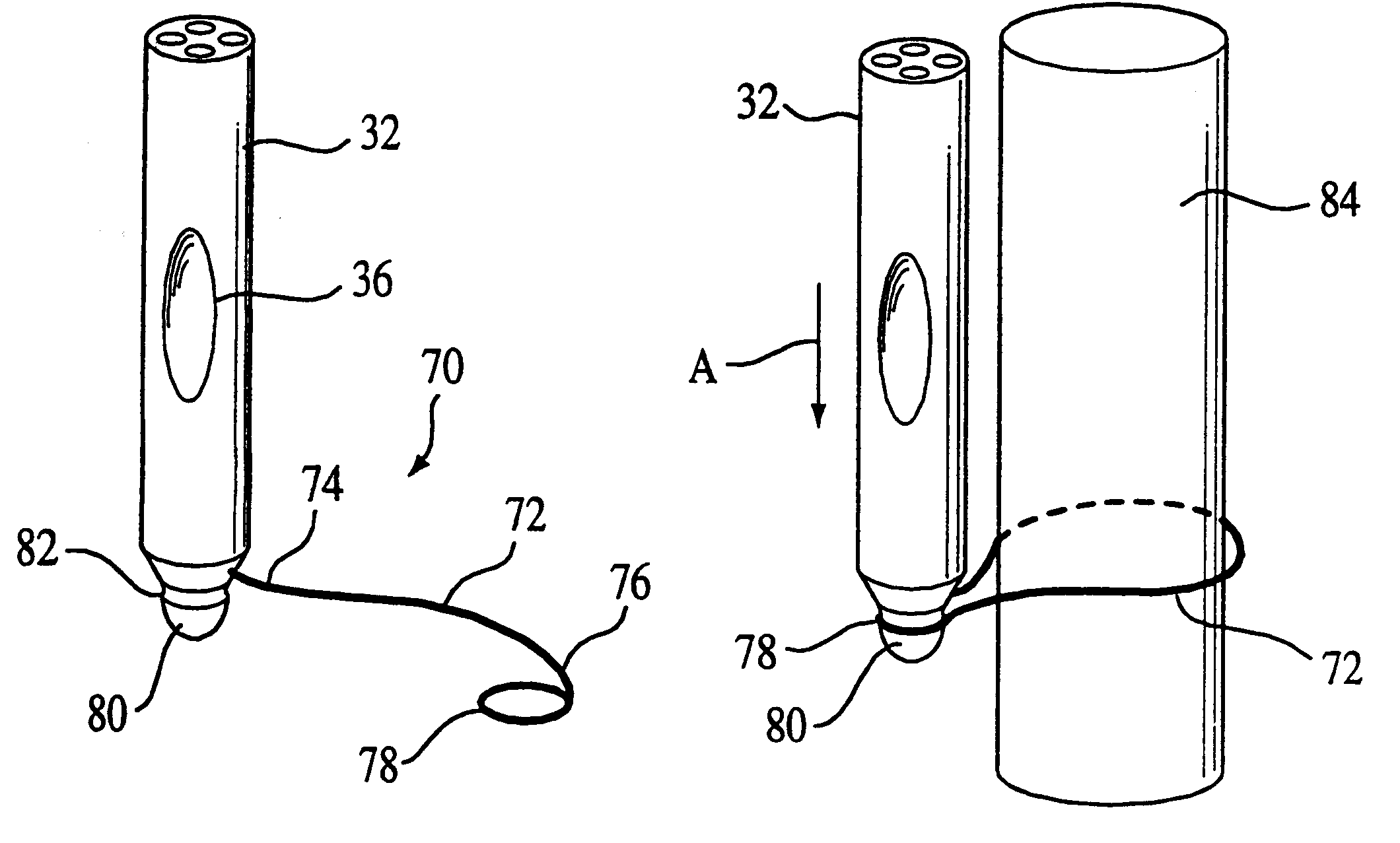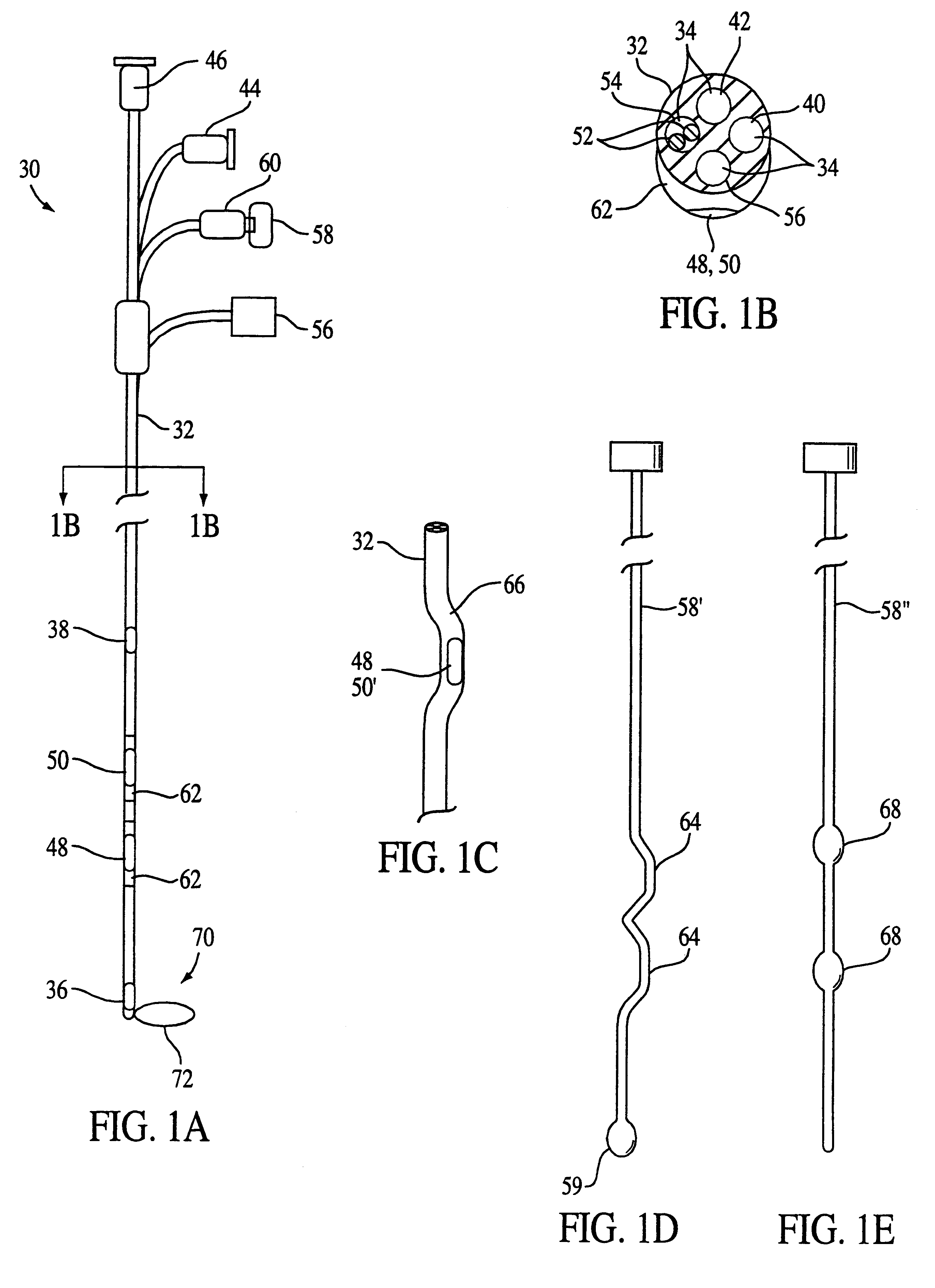Monitoring catheter and method of using same
a monitoring catheter and catheter technology, applied in the field of catheters, can solve problems such as difficulty in predicting clinical deterioration or diagnosis, patient may not ventilate adequately, and conventional patient monitoring devices are incapable of easily measuring the physiological conditions of patients
- Summary
- Abstract
- Description
- Claims
- Application Information
AI Technical Summary
Problems solved by technology
Method used
Image
Examples
Embodiment Construction
FIGS. 1A-1C illustrate a first embodiment of a monitoring catheter 30 according to the principles of the present invention. Monitoring catheter 30 inserts into the patient's esophagus and includes a body member 32 having a plurality of lumens 34 defined therein. Body member 32 is made from a biocompatible material suitable for use within the human body, such as a medical grade PVC with 35% Barium sulfate and having a durometer measurement of 90 Shore A. Other suitable materials for body member 30 include a medical grade polyurethane.
The entire length of the body member (or portions thereof) can be made from a radiopaque material to facilitate positioning the catheter in the patient. For example, a radiopaque strip can be provided down the length of the catheter. Alternatively, the radiopaque material can be provided at only the distal end portion of the body member because it is this portion of the catheter that is of primary interest while introducing the catheter into patient. The...
PUM
 Login to View More
Login to View More Abstract
Description
Claims
Application Information
 Login to View More
Login to View More - R&D
- Intellectual Property
- Life Sciences
- Materials
- Tech Scout
- Unparalleled Data Quality
- Higher Quality Content
- 60% Fewer Hallucinations
Browse by: Latest US Patents, China's latest patents, Technical Efficacy Thesaurus, Application Domain, Technology Topic, Popular Technical Reports.
© 2025 PatSnap. All rights reserved.Legal|Privacy policy|Modern Slavery Act Transparency Statement|Sitemap|About US| Contact US: help@patsnap.com



